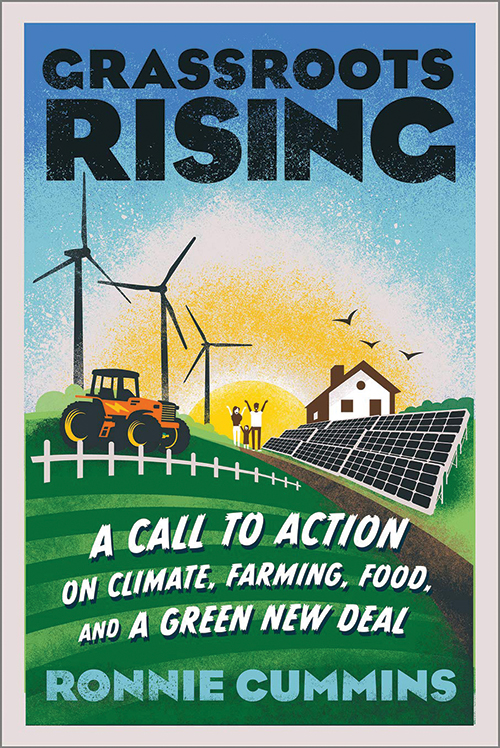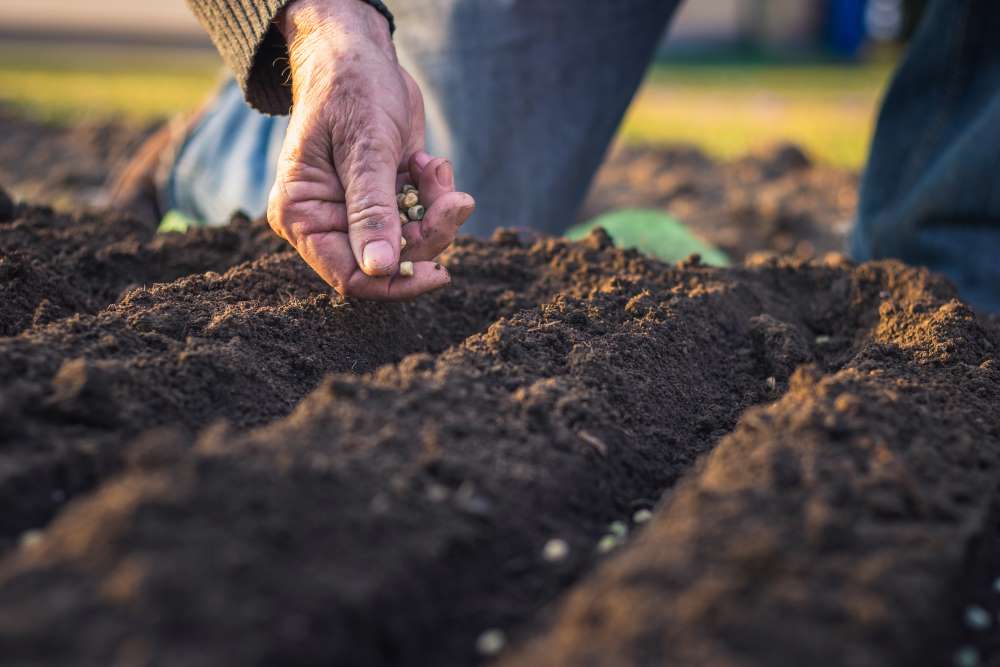
Grassroots Rising: A Call to Action on Climate, Farming, Food, and a Green New Deal
Reviewed by Pamela Haines
November 1, 2020
By Ronnie Cummins. Chelsea Green Publishing, 2020. 208 pages. $17.95/paperback or eBook.
Grassroots Rising is an invigorating and unapologetic call to action. Ronnie Cummins believes that we can go beyond climate mitigation to reversing global warming if we embark on an all-out campaign of transformation.
Cummins holds out the necessity of a two-pronged approach: stopping greenhouse gas emissions, and drawing down legacy carbon from the atmosphere into the soil. To arrive at net-zero emissions by 2030 in the United States, Cummins lays out a concrete plan to reduce emissions and draw down atmospheric carbon.
Carbon, from this perspective, is not the bad guy. While carbon-rich air and water is a problem, we need carbon-rich soils, and a 2 percent increase in the carbon content of soils could offset the impact of all greenhouse gas emissions. The technology—organic farming methods, agroforestry, and holistic rotational grazing—is at hand, and the potential has been demonstrated, with some regenerative farmers increasing the carbon content of their soil from 1 percent to 10 percent. Transitioning just 10 to 20 percent of agricultural production to best practice regenerative systems might be enough to reverse climate change, while bringing untold accompanying benefits.
Change in the agricultural sector, which could play such a significant role, is almost entirely overlooked in the search for climate solutions. While renewable energy is critical, agriculture is central. Our combined food, farming, and land use system—including fossil fuel use on farms, machinery, transportation, processing, refrigeration, chemical inputs, and off-gassing from uncovered soil and landfills—is responsible for almost half of U.S. greenhouse gas emissions. The vision of transforming factory-farmed commodity crop lands, much of which are now devoted to cattle feed, biofuels, and the corn and soy that are used to extend the shelf life of many of our so-called food products, is a compelling one.
Cummins identifies the main obstacle to transforming our current “degenerate” system as widespread disempowerment and pervasive pessimism, and suggests rules for organizing to address that: emphasize the positive and scale it up. Stop organizing around single-issue reform; link up with people’s primary concerns and connect the dots. Use moral jiujitsu to divide, co-opt, and overcome political and corporate adversaries while uniting a critical mass at the grassroots. Act and organize locally while cultivating global vision and solidarity. Embody the principles of regeneration—hope, solidarity, hard work, creativity, and joy—in our everyday practices.
There is much to love in this book. Cummins’s focus on imagining how we can win rings true. He is clear about how much needs to change, at so many levels, to make that possible. He holds out the need to put forth a very big vision, not only of a transition but a just transition, in order to bring enough people in. He thinks expansively, about military spending and redefining security, entrepreneurship and investment in scaling up regenerative practices, and citizen roles that go beyond individual choices. While focusing on a plan to make this shift in the United States, he is clear that much of the work of healing the planet must be done in the Global South, that the Global North has to be involved, and that the wisdom of Indigenous people is a key to that transition.
I would love to have more conversation with him on a couple of points. While noting that we need not be scared of government spending on this transition, his critique of those who would oppose it blurs the role of private banks in profiting from the collection of interest on public debt. And there is the question of vegetarianism.
I am persuaded that grazing animals have a role to play in the health of our grasslands, and can be part of both a climate solution and the “Honorable Harvest,” in the words of Indigenous biologist Robin Wall Kimmerer. I didn’t need to be convinced of the superiority of grass-fed over feedlot beef systems. But I would love to understand better the number of animals that would be actively beneficial (as the buffalo were to the prairie) and what that number would mean in terms of responsible per capita meat consumption in this country.
Cummins’s style tends toward big ideas, simplistic language, oration, and repetition. But his perspective on the soil as part of the solution, and his clearly demonstrated commitment to being an active part of that solution, more than make up for any limitations.
Pamela Haines is a member of Central Philadelphia (Pa.) Meeting. Her most recent book is Money and Soul, an expansion of a Pendle Hill pamphlet by the same name.


